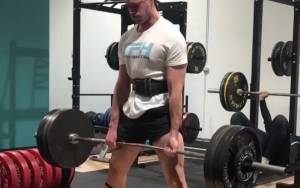Loose skin after significant weight loss is inevitable. This excess skin can be very cumbersome and put a damper on the huge achievement of losing a large amount of weight. Luckily, you don’t have to live with this loose skin. A surgical procedure called a panniculectomy can help get rid of it.
Are you undergoing a panniculectomy soon? If so, then you’ve come to the right place. Read on to find out everything you need to know about the panniculectomy procedure, including what to expect during the procedure and how to support recovery.
What Is a Panniculectomy?
A panniculectomy is an excess skin removal surgery. The panniculectomy procedure specifically removes the pannus, which is an area of skin located in the lower abdomen, below the belly button. A panniculectomy is often considered to be a cosmetic procedure or a form of plastic surgery since it improves the appearance of the abdominal area. However, panniculectomy has numerous health benefits and improves your quality of life.
Excess skin removal is common after gastric bypass surgery, which results in massive weight loss. When the skin is significantly stretched during weight gain, it loses some of its elasticity and is unable to snap back into place after you lose a significant amount of weight. As a result, patients after bariatric surgery find that while they are happy with their weight loss results, they are dissatisfied with the excess skin in different areas of the body, especially the abdomen. In some cases, the pannus may hang very low so that it covers the pubic area. In more severe cases, the overhanging pannus may extend below the knees.
How Is Panniculectomy Surgery Different Than a Tummy Tuck?
Both a panniculectomy and tummy tuck are types of body contouring procedures that help shape the abdominal wall and remove excess tissue. The panniculectomy procedure only entails the removal of loose skin, without interfering with the abdominal muscles. In contrast, a tummy tuck (also called an abdominoplasty) also tightens up the abdominal muscles and may also include liposuction, which is the removal of excess fat.
Why Might You Need a Panniculectomy?
Many people typically associate excess skin removal with massive weight loss. However, there are also other causes that may make you a candidate for skin removal surgery.
- Pregnancy: During pregnancy, the skin in the abdominal area stretches significantly to accommodate a growing baby. After birth, many women find that their abdominal skin remains stretched.
- Natural aging: During the aging process, skin tissues naturally lose more elasticity. For some individuals, this means that the skin begins to hang abnormally low.
- Back pain: In severe cases, the excess loose skin may be extremely heavy. This can put a strain on your back as you struggle to carry around the unwieldy, hanging skin. A panniculectomy can help relieve back stress and strain from loose skin.
- Infections: Excessive hanging skin can make it difficult to clean all areas of the body, which can result in fungal and bacteria growth.
Preparing for a Panniculectomy
If you have excess hanging skin, it’s a good idea to make an appointment with a plastic surgeon. They will be able to evaluate your skin and determine whether you are a good candidate for surgery.
For individuals who have experienced dramatic weight loss, many surgeons will require the maintenance of a stable weight for over a year. Fluctuating weight can jeopardize the outcome and safety of the surgery.
Your surgeon will also want you to undergo a preoperative evaluation with blood tests and an electrocardiogram. These tests help ensure that you are in good shape to undergo general anesthesia.
In the days leading up to surgery, you will likely be asked to stop taking certain supplements and blood-thinning medications, to reduce the risk of bleeding and other complications during surgery. You will also be asked to avoid eating for a certain number of hours prior to the surgery. Make sure to follow all preoperative instructions.
What to Expect During the Panniculectomy Procedure
During a panniculectomy procedure, you will be put under general anesthesia, which means that you will be asleep and unable to feel anything throughout the duration of the surgery.
Your certain will make incisions in the abdomen, to allow for the removal of extra skin. Your abdomen will then be closed with stitches, and drainage tubes may be put in place to allow for any extra fluids to drain from the surgical site. The entire procedure lasts around 3 hours, though this time varies for each individual. Following the procedure, you will be brought into the recovery room. In most cases, a panniculectomy is an outpatient surgery. However, in some cases, you may need to stay overnight for monitoring.
Potential Complications
As with all surgeries, the panniculectomy procedure is accompanied by possible complications. Before going into surgery, your surgeon will explain these potential complications. Though complications are rare, it’s important to be aware of them. Here are a few of the possible complications you may face:
- Blood clots: This is a potential complication of nearly any surgery in which you undergo general anesthesia. Lying immobile during and after surgery increases your risk of blood pooling in areas of your body and clotting.
- Seroma: The development of a seroma is one of the more common complications that patients experience after a panniculectomy. A seroma is a small pocket of fluid that develops near the surgical site. Though it can resolve on its own, the seroma can leave a small hardened lump in its place. Uncomplicated seromas are harmless, though they can cause discomfort and excess scarring. An infected seroma requires more aggressive intervention, including antibiotics and drainage. (1)
- Cellulitis: Cellulitis is a term that describes a skin infection that can occur around the surgical site. If you notice any oozing, redness, swelling, and fever, it’s important to seek medical attention immediately.
What Does the Healing Process Look Like?
A full recovery from a panniculectomy surgery may take a month or longer, though the time varies from person to person. After a couple of weeks, you should be able to stand comfortably, return to work, and carry out most of your normal daily activities.
How to Support Recovery After a Panniculectomy
When recovering from a panniculectomy procedure, there are certain steps you can take to support a speedy and successful recovery. Check out the tips below!
1. Get Lots of Rest
Your body can’t properly heal without getting lots of rest! Most healing happens during sleep because that’s when the immune system can specifically focus on healing damaged tissues, without essentially being distracted by carrying out normal daily functions. You will likely feel sleepy and fatigued following surgery. Listen to your body, and take naps when you need to. This is simply your body telling you that it needs rest.
2. Take Time Away from Work
Though you may be feeling much better in a week, it’s a good idea to take about two weeks off of work. This will allow you plenty of time to rest and allow you to make a faster recovery. Pushing yourself to go to work when it’s uncomfortable and exhausting will do more harm than good.
3. Avoid Straightening the Body While Resting
The abdominal area will usually feel very tight following the panniculectomy procedure, and you will likely find it difficult to stand up straight or recline fully. For the first week or so, keep your body a little bit bent while lying down, to prevent stretching. Reclining fully may pull at the stitches in your surgical incision, which may cause reinjury or worsen any pain and swelling.
4. Follow Instructions for Taking Care of Drain and Bandages
Following the procedure, you will be sent home with bandages to protect your surgical wound. Your nurse will show you the best way to care for your bandages, how to apply more, and when you can remove them.
In some cases, you may also go home with a drainage tube in place. Your surgeon and nurses will give you instructions on how to care for the drainage tube.
5. Stay Hydrated
Staying hydrated is crucial for promoting a fast recovery. When your body sustains an injury – from either surgery or an accident – the body needs lots of resources and support to repair the injury. Staying hydrated is one way to provide this support. Drinking plenty of water helps ensure that your blood flow stays up and your body can efficiently deliver oxygen and nutrients to the surgical site.
6. Keep the Surgical Site Clean
Preventing infection is a key focus of recovery following surgery. The surgical wounds in your abdomen are an entryway for bacteria if the area is not cared for properly. However, you may be asked to avoid showering for a day or so after surgery. Keeping the wound dry is initially very important since moist bandages can breed bacteria and increase the risk of infection.
7. Arrange for Help at Home
Following your surgery, it will be very helpful to have someone help out with some of your daily chores while you recover. For example, you will need someone to drive you home from the hospital. It will be helpful to have someone to help get groceries in the house and prepare a few meals. Having a loved one support you with a few of these daily basics can relieve you of stress, allowing you to focus on your recovery.
8. Eat Nutritious Foods
Eating a healthy, balancing diet after surgery equips your body with the resources that it needs to make a fast and full recovery. The right foods can help you keep levels of inflammation and oxidative stress low while healing damaged tissues. Plus, eating a healthy diet can help maintain a stable weight and skin integrity in the future so that the results of your panniculectomy last for as long as possible. So, what are the best foods to eat after surgery? Here are a few of the most important foods to eat during recovery:
- Protein: When you are recovering from an illness or injury, your body requires more protein than usual. The body utilizes amino acids during the recovery process. Amino acids are the smallest units that make up protein. While the body can manufacture some of these amino acids on its own, it requires essential amino acids on a daily basis. Essential amino acids must be obtained from dietary sources and are crucial for supporting muscle and collagen synthesis, which are central processes for recovery. Animal products like lean meats, fish, and dairy offer optimal ratios of essential amino acids. To get ideal ratios of essential amino acids from a vegan diet, it’s critical to eat a variety of plant-based protein on a daily basis, such as beans, whole grains, nuts, and seeds. To eliminate the hassle of having to make sure your diet contains the protein you need, you can also try adding a high-quality essential amino acid supplement to your smoothies and beverages.
- Fiber: Fiber is a crucial nutrient during recovery. Eating plenty of fiber supports a healthy, balanced microbiome. Having a healthy microbiome means that good bacteria are thriving in your gut and producing anti-inflammatory compounds. Increasing your intake of soluble and insoluble fiber can also help keep your blood pressure at a healthy level and increase blood flow. To incorporate more fiber into your diet on a daily basis, eat an abundance of whole grains, beans, fruits, and vegetables.
- Fruits and veggies: Fruits and vegetables are a vital part of any healthy diet, but they are particularly important in supporting your body during the wound healing process. Fresh produce is packed with healing compounds like vitamins, minerals, and antioxidants. Micronutrients, like vitamin C, polyphenols, and carotenoids help the body get rid of cellular waste products while streamlining immune system activity. As a result, the body is able to support the efficient synthesis of skin and connective tissues while also warding off infections. Moreover, eating plenty of fiber helps ward off the unpleasant side effects of prescription painkillers, including constipation. Eating loads of fiber can also help fight against ileus, which is a common side effect associate with abdominal surgery that is characterized by the “freezing” of the gastrointestinal tract and is similar to constipation. Excellent fruits and vegetables to incorporate into your post-surgery diet include kale, broccoli, cauliflower, sweet potatoes, mushrooms, asparagus, blueberries, raspberries, blackberries, and oranges.
- Healthy fats: A lot of people think fat is the bad guy when actually fat is an important structural component of each cell throughout the body. To synthesize new cells, the body needs all of the raw materials to construct the cell membranes and organelles and to organize the cells into tissues. Plus, healthy fats also support the immune system and lower systemic inflammation. So, where can you get these healthy fats? Healthy fats can be found in a variety of foods. Fatty fish like salmon and mackerel offer an abundance of polyunsaturated fats called omega-3 fatty acids, as well as other immunity-boosting nutrients like vitamin D. In addition to animal sources of healthy fats, there are also a variety of plant-based healthy fats. Try adding foods like walnuts, almonds, pecans, flaxseeds, chia seeds, avocados, and olive oil to your recovery diet.
9. Avoid Strenuous Exercise
Strenuous exercise should be avoided for several weeks following surgery. Vigorous movement may stretch your skin and pull at your stitches, which can cause injury, bleeding, and infection. However, gentle exercise and walking is likely a good idea. Gentle physical activities increase blood flow and help reduce the risk of developing blood clots. Always follow your surgeon’s guidelines regarding when you can resume exercise and other activities.
10. Manage Pain
Being in pain is no fun, and it may actually inhibit healing. Being chronically physically or psychologically stressed can actually cause inflammation that makes the immune system less efficient. Minimizing or eliminating pain during the healing process can help you rest more and stay relaxed. Your surgeon may prescribe prescription painkillers to take for a few days following your panniculectomy procedure. After a few days, swelling and bruising should subside and you should be able to comfortably manage your pain with over-the-counter medications. You will likely be advised to stick to acetaminophen and to steer clear of nonsteroidal anti-inflammatory drugs like ibuprofen since they tend to increase the risk of bleeding.
11. Attend All Follow-Up Procedures
Following your panniculectomy surgery, your surgeon will want you to come in for a follow-up appointment. Post-operative appointments allow the surgeon to make sure that you are recovering as expected and without complications. These appointments also provide a convenient time to ask any questions you might have and address any concerns.
Ultimate Outcome of a the Panniculectomy Procedure
After you get through the recovery process, the outcome of the panniculectomy is generally very positive. Here are a few of the benefits you will likely experience:
- Easier movement: When the pannus is hanging below the pubic region, the body is imbalanced and it’s much more difficult to walk and perform daily activities. Following a panniculectomy, you will find it much easier to move around, engage in physical activities, and take care of all responsibilities. Essentially, your quality of life on a day-to-day basis will improve significantly.
- Improved self-image: Removing the pannus can help your clothes fit more, and you will likely have more confidence in your proportions and overall appearance. Having a smoother profile and figure can also be a motivating factor for keeping your weight within a healthy range.
- Back pain relief: Excess skin removal surgery means that you will no longer need to carry around extra weight in the front of your body. As a result, your spine and back muscles no longer need to bear the extra burden and are relieved of stress.
- Better hygiene: Since excess rtp slot skin will be removed, it will be much easier to wash all areas of the body. Bacteria and fungi will not have the opportunity to get Slot bonus 100% trapped in loose folds of skin, which means you’ll experience fewer infections. slot bonus 100
Things to Keep in Mind
Keep in mind that although the outcome Slot Gacor Maxwin of the panniculectomy surgery is very positive, it’s also important to realize that your figure will not be slim and fit. It’s important to have realistic expectations so that expectations match the outcome.
Before making any big diet changes or taking slot bet rendah supplements, it’s best to talk to your doctor first to ensure all changes support your specific needs. It’s also important to always follow the advice of your surgeon and nurses, to ensure the best outcome of your procedure.
Conclusion
A panniculectomy is a form of loose skin surgery that targets the abdomen. You may benefit from a panniculectomy after weight loss surgery, pregnancy, or aging. Though a panniculectomy is sometimes considered a form of cosmetic surgery, it is also a medically necessary surgery that improves your quality of life. Undergoing a panniculectomy is a major surgery that requires many weeks of recovery time. The results of the surgery can be life-altering in a positive way, by eliminating pain and making daily activities easier. To best support the healing process, it’s important to avoid strenuous activity, arrange for help at home, stay hydrated, manage pain, and eat healthy meals. Always follow all advice from your surgeon to ensure a successful recovery.
References:






















